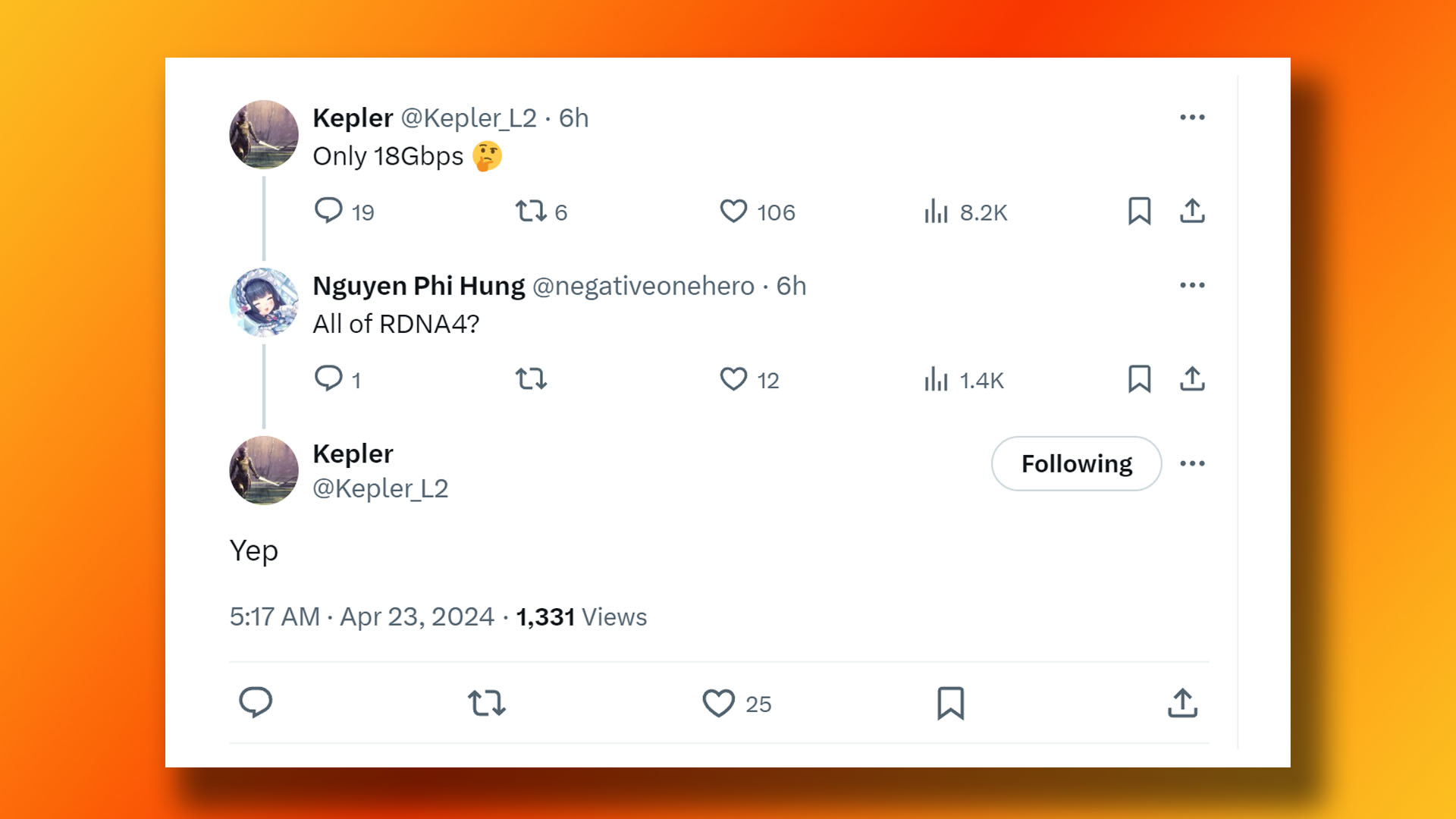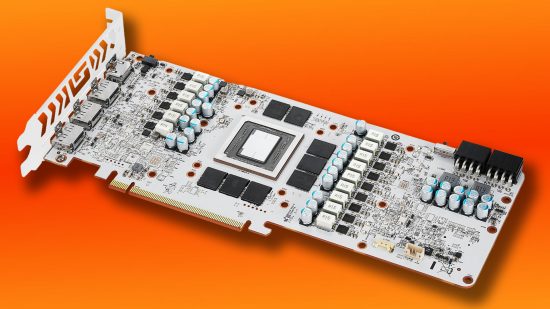The next generation of AMD Radeon graphics cards will have slower memory than today’s models, according to the latest rumors on the tech grapevine. The new lineup of RDNA 4 GPUs is expected to launch at the end of 2024, which means it’s very likely to have some stiff competition from Nvidia Blackwell GPUs.
AMD is rumored to be playing it safe with this generation, as RDNA 4’s top model reportedly focused on providing GeForce RTX 4080 speed at half the price, rather than trying to wrestle the best graphics card banner from the Nvidia GeForce RTX 5090. If those rumors are indeed true, then there’s little need for AMD to bump up the cost of its new GPUs by using cutting-edge memory tech.
The latest word on these new GPUs comes from tech leaker Kepler_L2, who cryptically wrote “Only 18Gbps” with a thinking emoji in a post on X (formerly Twitter). When another X user asks for clarification that this means “All of RDNA4?” Kepler replies with a simple “Yep.”

For reference, 18Gbps is slower than the fastest GDDR6 memory used in AMD’s top-end GPUs based on the existing RDNA 3 architecture. For example, the GDDR6 VRAM in the Radeon RX 7900 XTX runs at 2,500MHz, giving it an effective speed of 20Gbps. This implies to us that AMD is going to use GDDR6 VRAM on its new RDNA 4 GPUs, while the top end of Nvidia’s new Blackwell lineup, such as the RTX 5080, is rumored to use the latest GDDR7 memory tech.
While this news might seem disappointing if it turns out to be true, it makes sense from AMD’s perspective if it is indeed planning to focus on the mid range GPU market, rather than the high end, especially as you can still get plenty of bandwidth from GDDR6. Thanks to its 384-bit wide memory interface, the Radeon RX 7900 XTX can still get close to 1TB/s of memory bandwidth, for example, and using last-gen memory will enable AMD to keep down costs.
Of course, AMD has yet to announce firm details about its next gen GPUs, and this is all based on rumor right now, so take it with a pinch of salt for the moment. In the meantime, if you’re looking to buy a new graphics card, check out our Nvidia GeForce RTX 4080 Super review, where we run Nvidia’s latest $999 gaming GPU through its paces.
